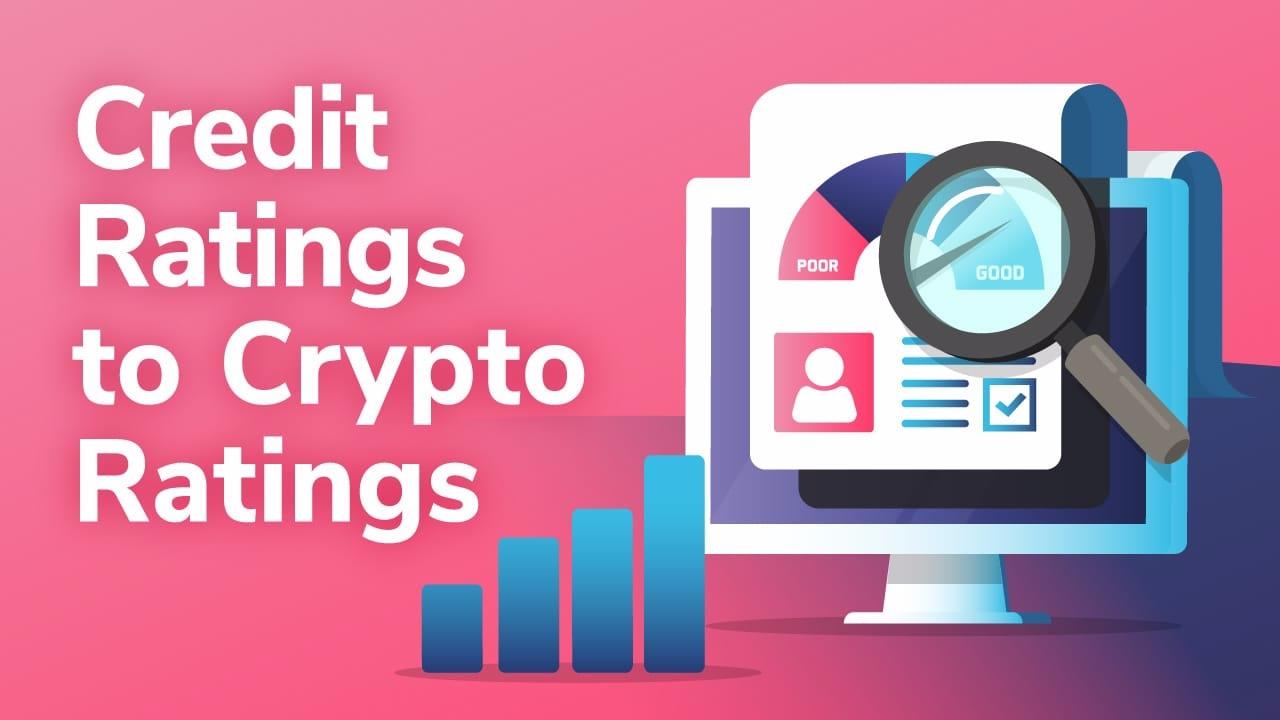
Traditional investors tend to look closely at so-called “credit ratings” in order to judge the creditworthiness, or perceived “quality”, of a borrower. Moreover, similar types of ratings are available for most asset classes, with many actors offering ratings for various stocks, companies, or even financial instruments.
Now, with cryptocurrencies becoming increasingly popular as an asset class, people look to crypto for everything from preserving wealth to even believing blockchain technology, decentralized finance and crypto could replace the traditional finance system. Nevertheless, the crypto industry is still somewhat lacking when it comes to tools for rating the different cryptocurrencies and altcoins.
Granted, one can look at relative market dominance, where Bitcoin is the clear leader followed by Ethereum. However, this only presents a somewhat crude snapshot of the current popularity of different cryptocurrencies. Wouldn’t it instead be handy if there were some “crypto ratings”, in the same vein as the credit ratings presented by “the big three”, i.e. Standard and Poor’s, Moody’s and Fitch?
One actor claiming to finally solve this issue is Weiss Crypto Ratings. Weiss Crypto Ratings advertise themselves as the world’s first rating system for cryptocurrencies. They rate more than 100 different cryptocurrencies, such as Bitcoin, Ethereum, and Ripple. Weiss Ratings has been around for almost 50 years now, and they are an independent financial rating agency. However, what is Weiss Crypto Ratings more exactly?
In this article, we are going to inform you about Weiss Crypto Ratings, and the first step in grasping why crypto ratings are interesting and what they are is to understand credit rating agencies. With that said, you should keep in mind that there are also many other ways to educate yourself regarding cryptocurrencies. For example, Ivan on Tech Academy is one of the top blockchain education platforms in the world.
What are credit rating agencies?
Credit rating agencies are organizations that determine and rate the credit risk of private/public sector companies and governments that are using the capital market for financing. This means that the agencies can rate the issuer of debt instruments. A debt instrument is a tool that an organization or government can use in order to raise capital.
These ratings indicate how likely a company, or government, is to repay their debts. These ratings are often used by investors when determining the risk-factor associated with an investment.

These agencies mark different firms and bond issuers using different ratings such as “AAA”, “CCC”, “Ba3” among others. The highest rating possible is often “AAA” (depending on the scale), and there are only a few countries in the world that have this kind of rating. Among these countries, we can find economically speaking “reliable” nations such as Canada, Australia, Germany, and Sweden.
The higher the rating, the better since it indicates that the risks for investment are low. The ratings given by these organizations can influence the government or company’s rates for taking a loan and this is just one of the drawbacks of having a low rating.
If, for example, a country suffers a crisis, its rating might get lower. The lower rating indicates that the risk is higher for the lender since the borrowing county might have difficulty paying back their debt. This, in turn, would result in investors demanding higher returns, meaning that the borrower’s rates will increase.
Several different agencies are issuing these ratings, and the three most popular ones are Standard & Poor’s (S&P), Moody’s, and Fitch Group. These are commonly known as “The Big Three” credit rating agencies.
Standard & Poor’s (S&P)
Standard and Poor’s, or the S&P, is the oldest of the credit rating agencies, and the history of the organization first began more than 160 years ago. However, the first issue of Poor’s Publishing Co. was released in 1916, where the first ratings were included. Twenty-five years later, in 1941, Poor’s Publishing Co. merged with Standard Statistics Co. to form Standard & Poor’s.
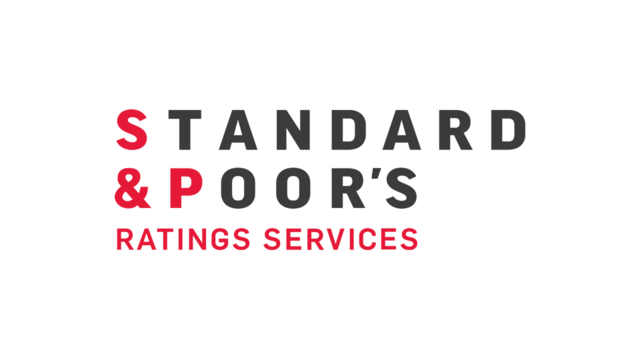
Today S&P has ratings in 26 different countries all around the globe. They issue market intelligence in the form of research, leadership, and, of course, credit ratings. As the name suggests, Standard & Poor’s are also behind the well known S&P 500 Index. S&P 500 is an index of 500 big limited companies in the United States. The index is the second biggest in the US, just behind Dow Jones.
S&P covers everything from benchmarks, asset classes, and multiple industries, and they issue their ratings on governments and private/public company debts. The scale that they are using goes from “AAA” all the way down to “D”.
Moody’s
Moody’s first came to light back in 1909, when John Moody published an analysis on railway finance. He graded the stocks and the bonds by evaluating the uncertainties and risks within the financial world of railways.
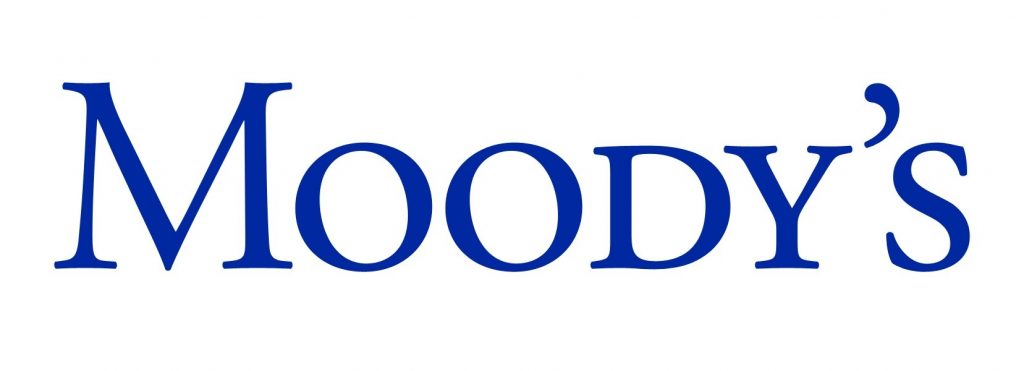
Moody’s assigns ratings to stock, bonds, and governments, and their rating system goes from “AAA” down to “C”. The stocks, governments, and bonds that receive the rating of “AAA” have the lowest risk; meanwhile, the ones that receive “C” are deemed to have a low chance of recovering.
Today, Moody’s provides analysis and ratings for more than 11,000 corporate issuers, 21,000 publishing finance issuers and 130 countries. Furthermore, they also provide investors with research regarding stocks, governments, as well as bonds.
Fitch
The name Fitch comes from — just like Moody’s and S&P — the founder of the agency. The name of the founder was John Fitch, and he started the firm in 1913. Fitch has over 2000 employees and provides ratings and information of more than 20,000 entities all over the globe.

They have more than 100 years of experience when it comes to rating the traditional financial market. They base their ratings on how much of an effect systemic changes might have on the debt and the kind of debt a company is holding.
Just like S&P, Fitch is using the same ranking scale, which means that the highest possible ranking is “AAA”, and the lowest is “D”. “AAA” are companies that hold super high quality with high cash flow whereas “D” stands for defaulted.
Standard & Poor’s, Moody’s, and Fitch are the largest credit rating agencies, and people barely mention others than these, well-established firms. But why is this? Why are not other agencies also being mentioned?
One reason is that the Security and Exchange Commission acknowledged them as NRSROs, which stands for Nationally Recognized Statistical Rating Organizations. But this is probably not the only reason. Seven others make the list of NRSROs, but we still rarely hear from these other agencies.
The second reason might therefore be that these “big three” make their information free for the public. S&P, Moody’s, and Fitch all make their money from the companies and entities that they rate. If an organization would like to get a rating from one of these firms on, for example, a bond, the organization needs to pay a fee.
What is Weiss Crypto Ratings?
Now that we have established what traditional credit rating agencies are, let us explore and understand Weiss Crypto Ratings. Weiss Ratings have provided people with ratings and information within traditional finance since 1971, and have recently started providing the same services for the crypto market.
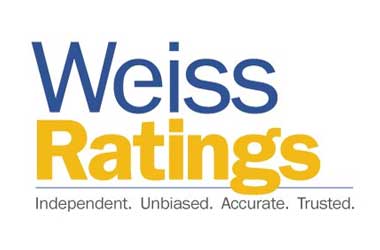
Weiss markets themselves as: “The World’s First Ratings of Bitcoin, Ethereum, Ripple, Dash, and 100+ Cryptocurrencies by a Financial Rating Agency”. They say that they are using their years of experience and accuracy within the traditional rating market, and applying it to cryptocurrencies.
Moreover, Weiss Crypto Ratings supposedly use an advanced computer model to evaluate different cryptocurrencies and rate them with risk as a basis. They assess factors such as the blockchain technology, security, adoption, and the risk-to-reward potential.
Weiss has actually proven to be somewhat successful, and their track record since 2017 has been quite impressive. According to the ratings agency’s claims, Weiss’s advice and analysis would have proven to be profitable. In fact, the organization touts that they would have been so profitable that their recommendations would have resulted in a profit seven times higher than if you were to invest in Bitcoin alone. So, what are they basing these ratings on?
Before looking into how Weiss crypto ratings are decided, however, it is worth noting that it is always better to form your own opinion from your own due diligence than to merely trust ratings by a third party.
More importantly, Ivan on Tech Academy provides you with all the blockchain courses you can possibly need to learn everything crypto and blockchain-related. Right now, you can get 20% off when enrolling in Ivan on Tech Academy if you use the exclusive promo code BLOG20.
Weiss Crypto Ratings Model
Weiss’ ratings system uses their new and advanced model to analyze different cryptocurrencies. The model analyses thousands of points on the coin’s trading patterns, adoption, security, and the currency’s technology.
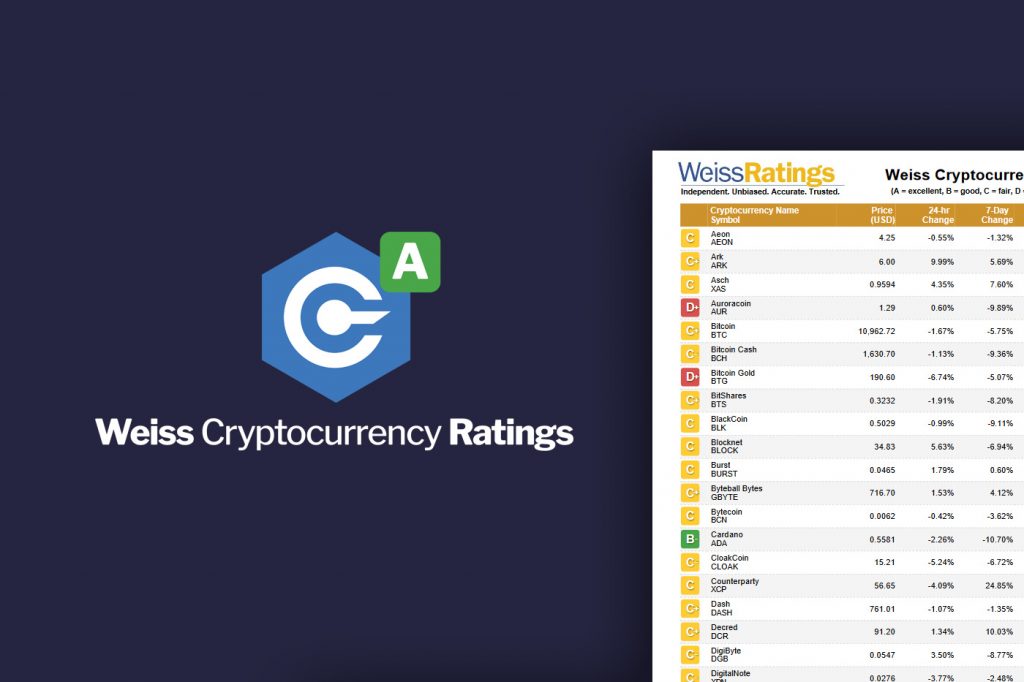
Here are some examples of the indexes they are using when determining risk and setting ratings:
- Cryptocurrency Risk Index
Here Wiess measures how volatile the price of a coin is in several time frames. They also look at the possibility that there is a market bias, and finally, they measure the decline from a peak to bottom. - Cryptocurrency Reward Index
Weiss Crypto Ratings evaluate absolute returns compared to a benchmark, returns compared to moving averages, and smoothed returns. - Crypto Technology Index
This index shows the level of governance capabilities, the possibility of upgrades and scaling solutions, the anonymity level, and finally, how well the coin works with other blockchains. Along with this, the index is also used to show the weaknesses and strengths of the coin. - Cryptocurrency Adoption Index
This index measures network security, decentralization of block production, market penetration, speed, public acceptance, and much more.
What Weiss Crypto Ratings offer
Weiss Crypt Ratings provide a few different services for their members. Anyone can become a member for $936 per year, and the services provided are:
- Direct access to all crypto ratings. This access is available as soon as someone becomes a member, where they are provided with a list of over 100 coins.
- The members are the first to receive news about newer coins that are constantly being rated. The list — containing over 100 coins — only has 74 of them currently rated, but as they expand, the members are the first to receive the new ratings. They provide this service for their members to warn them about the worst coins and make sure they select the winners.
- Updates every week. Since the crypto market is changing at an incredible pace, it is vital for Weiss Crypto Ratings that they give more frequent updates. To battle the speed of change within the crypto-market, they update their members every Thursday of the week.
- Weekly commentary. They promise their customers that they will give at least one comment every week on downgrades, upgrades, and the latest crypto trends.
- Alerts are provided as well. Since the market is fluctuating and at high speed, Weiss has decided to send out flash alerts so that their members do not miss the most significant news.
- Weiss Crypto Alert. Weiss Crypto Ratings provide their members with an e-letter every Monday, Wednesday, and Friday. In these letters, which are written by crypto experts, the members receive information on opportunities, scams/misinformation, and they give an unbiased response to the market.
What are the differences between traditional finance ratings and crypto ratings?
One crucial difference between traditional finance ratings and crypto ratings is the factor of time. Traditional ratings have been around for more than 150 years, whereas crypto is a relatively new sector.
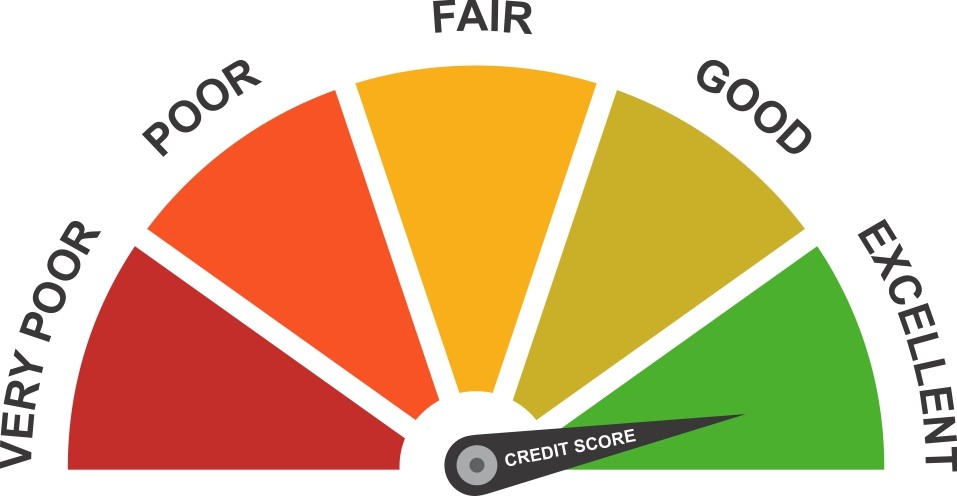
This means that understanding the crypto rating market is more challenging and that there is a lot of uncertainty here. When it comes to the traditional market, data has accumulated over a more extended time period, which means that we can see the effects of the economy and use this in a more accurate way.
On the other hand, crypto is relatively new, which means that the effect that the economy might have on the market is still somewhat unknown. This makes it hard to rate different coins since it can be hard to predict these assets’ outcomes if changes occur.
Another important difference between the traditional finance ratings and crypto ratings are the assets that are being marked. In the crypto market, the assets that are being assessed are cryptocurrencies, and they are harder to evaluate than traditional assets.
Benefits and drawbacks of Weiss Crypto Ratings
The fact that Weiss Ratings has decided to enter the crypto industry and become the first rating agency to start rating cryptocurrencies is positive for the market. Introducing “crypto ratings” such as these show that there is immense potential in the crypto industry, and it will also lend more legitimacy to the field. People are always going to be skeptical about the unknown and what they are unfamiliar with. So, introducing “crypto ratings” can be a way for traditional investors to enter the crypto market and get more trust for crypto assets.

Crypto is still a somewhat unknown field for the average person, and many people can be skeptical about these virtual currencies in general. Therefore, it speaks volumes that a well-established company with 50 years of experience in rating companies and countries joins the world of crypto. Having a company with a long history in traditional finance start doing crypto ratings could show crypto skeptics that crypto is here to stay.
However, the crypto market is challenging and still relatively new in comparison to traditional finance. This means that the rating market for crypto must be approached with caution.
Nonetheless, the fact that Weiss Ratings has a lot of experience in the traditional rating market (where they have a good record) does not mean that they automatically will be good at rating cryptocurrencies. This means that even though a coin receives a good rating from Weiss Cryptocurrency Ratings, it is not a guarantee that the coin will perform. It is also harder to evaluate crypto-assets since they are relatively new and due to their volatile nature.
Moreover, one should also keep in mind that Weiss’ Crypto Ratings provides a source of revenue for them. Just like with traditional credit rating agencies, this means that crypto rating agencies may have their own agenda behind which assets they rate in a certain way.
Pros and Cons Conclusion
However, the idea behind providing crypto ratings is sound, as it will give people with limited knowledge of the crypto market some insight on certain coins. However, for any newcomers, it is important to note that the market is uncertain and that even a good rating is not a guarantee that the coin will be profitable.
Additionally, it is important to know that crypto-assets can be extremely volatile and uncertain. It is, therefore, important not to trust crypto ratings blindly since such a strategy might backfire.
If you would like to learn more about cryptocurrencies, blockchain, and crypto ratings, do not hesitate to join the number one blockchain education platform Ivan on Tech Academy. Ivan on Tech Academy provides you with a great selection of blockchain courses at all different levels. So even if you are a beginner or an experienced developer, there are courses that will suit you.
